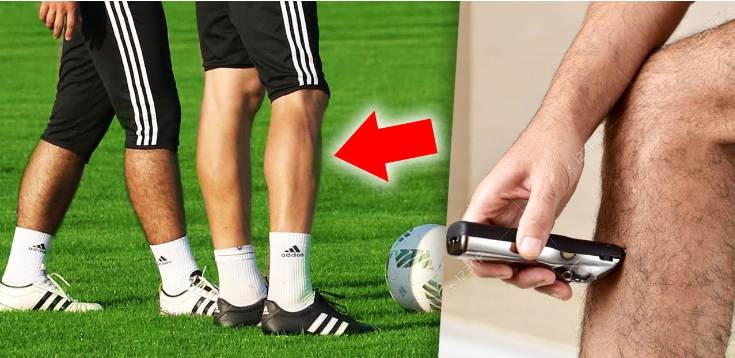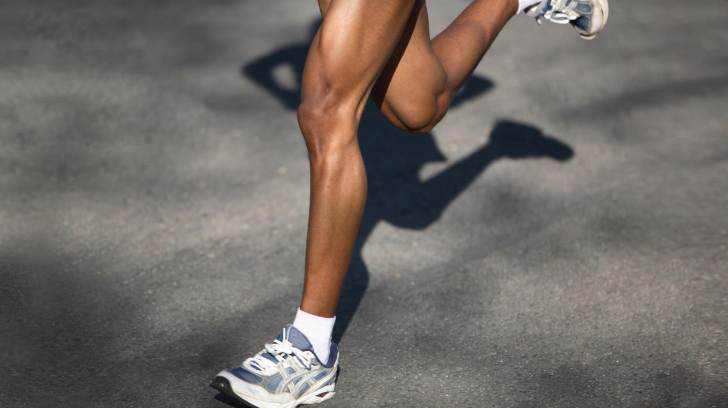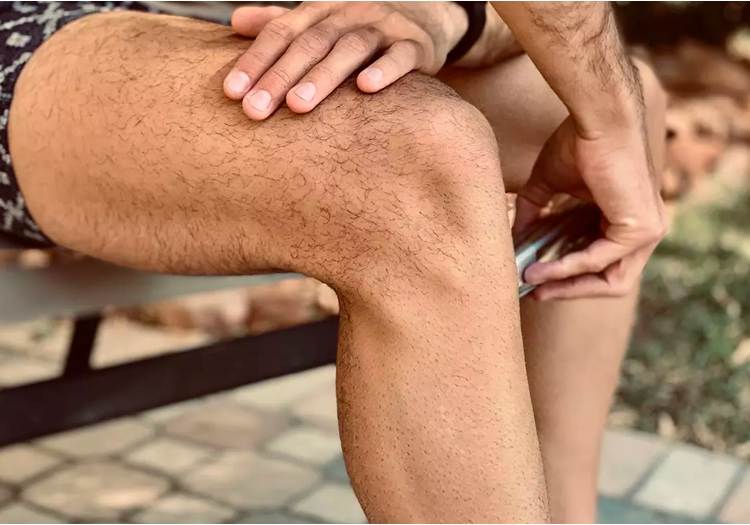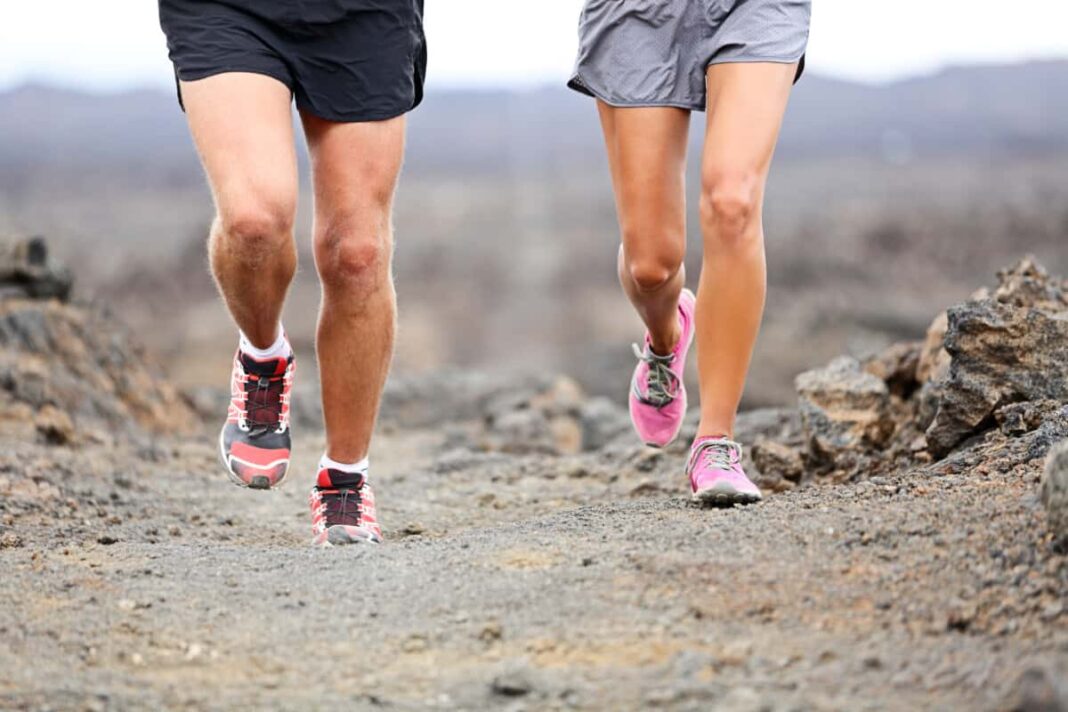Have you ever thought about leg shaving in athletes? Do runners shave their legs? If you are e fan of sports, you must have noticed your favorite athletes with very smooth legs. Usually, people think that it is for aesthetic purposes but there are also other reasons behind it.
To be able to complete the race flawlessly, they not only need to keep themselves fit but also shave their legs. Why? Some believe that it helps reduce drag while others think it is for visual purposes only. Let’s find the truth!
Table of Contents:
- Part 1: History of Leg Shaving in Sports
- Part 2: Reasons Why Runners Shave Their Legs?
- Part 3: The Science Behind Leg Shaving and Performance
- Part 4: How to Shave Your Legs Properly
- Part 5: Alternatives to Shaving for Runners
Part 1: History of Leg Shaving in Sports
 In the world of sports, leg shaving was started around the 20th century by swimmers and cyclists. This reduced friction and helped them perform better in their respective sports. Then this became a trend even in runners, bodybuilders, and other professional athletes.
In the world of sports, leg shaving was started around the 20th century by swimmers and cyclists. This reduced friction and helped them perform better in their respective sports. Then this became a trend even in runners, bodybuilders, and other professional athletes.
Now shaving the legs has become common among athletes as it helps them showcase their body proportions, and muscles and allows them to be more efficient in their performance.
The pioneers of leg shaving among athletes have not only motivated others to do the same but also influenced grooming practices worldwide. They are closely observed by their fans and the public who have now also accepted leg hair shaving in men as a common practice.
Part 2: Reasons Why Runners Shave Their Legs?
Why do runners shave their legs? Here are the possible reasons!
Aerodynamics and Performance Enhancement
Having thick and bushy legs can increase the drag which compromises the speed of runners. Everyone knows that positions are decided by even a one-second difference so no good runner will compromise on this.
Shaving legs can help reduce this drag and provide a faster speed to the runner.
Injury and Wound Care
 Being a runner, you must be very well aware of the injuries suffered by runners during their practices and official competitions. With the hair on the legs, it is difficult to apply bandages, locate the exact injury, and treat it effectively.
Being a runner, you must be very well aware of the injuries suffered by runners during their practices and official competitions. With the hair on the legs, it is difficult to apply bandages, locate the exact injury, and treat it effectively.
Shaving will make your legs hair-free making it easier to treat the wounds and apply bandages.
Massage and Muscle Therapy
A leg massage relaxes the muscles, increases flexibility, and improves the range of motion in athletes. They often massage and muscle therapies to prevent muscle strain and increase the blood flow in the legs. If your legs are hairless, these massages might prove more comfortable, effective, and soothing for the runners.
Aesthetic and Psychological Benefits
Shaving legs or keeping the hair also depends upon the personal preferences of a runner. Some athletes remain unbothered about their leg hair while others prefer shaved legs. It gives them a sense of cleanliness and increases self-confidence in them, This eventually leads to better performance.
Part 3: The Science Behind Leg Shaving and Performance
 There are no studies that particularly prove the effect of leg shaving in running but significant effects have been seen in other sports. Chester Kyle was the first one to conduct a study in 1987 on the impact of leg shaving on aerodynamics. He observed a 0.6% reduction in drag which saved the cyclists 5 seconds in an hour trial at a speed of 37 km/hour.
There are no studies that particularly prove the effect of leg shaving in running but significant effects have been seen in other sports. Chester Kyle was the first one to conduct a study in 1987 on the impact of leg shaving on aerodynamics. He observed a 0.6% reduction in drag which saved the cyclists 5 seconds in an hour trial at a speed of 37 km/hour.
This was experienced in real life by Thomas, a triathlete who forgot to shave his legs before his testing session. He observed a 7% reduction in drag thus saving cyclists that allowed him to exert 15 watts less power but still go at the same speed. After that, 5 more cyclists were tested who saved 50 to 82 seconds on a 40km long course.
Davis Phinney, an American cyclist, who had 300 victories stated “I know that if I ever looked down while I was on the bike and saw hairy legs, I immediately felt slower.”. It is presumed that the concept of leg shaving works similarly for all sports so it might have the same effect on running.
Part 4: How to Shave Your Legs Properly
Pre-shaving Preparation Tips
Before shaving the leg hair, here are some tips you can follow to make shaving easier and a smoother experience:
- Start with a warm water shower as it softens your body hair and it gets cut more easily as you move the blade against them
- Then use a gentle exfoliating scrub, Loofah, or gloves to clean your skin from the dead cells and dirt. This makes the body smooth and reduces friction between the skin and the razor
- Longer hair can easily get tangled with the blade so trim it to a shorter length first before shaving
Best Tools and Products for Shaving Legs
 You can either use the traditional shaving equipment or level up your game with modern shaving tools. Here are some products and tools that you can try for shaving;
You can either use the traditional shaving equipment or level up your game with modern shaving tools. Here are some products and tools that you can try for shaving;
- Traditional Razors: Traditional razors are usually easier for beginners to use. You can control them however you want. Moreover, they can also help you get a closer shave
- Shaving Creams: Shaving creams serve help as lubricants between the razor and your skin. It reduces the chances of nicks and cuts. Lathering them up on the skin will help the razor move more swiftly and efficiently
- Electric Razors: Electric shavers are generally considered safer than traditional blades. They are more quick and efficient but do not provide a close shave as much as manual razors
Step-by-step guide to Shaving Legs Safely
After softening the leg hair and trimming it shorter, follow these steps to give your legs a flawless shave:
- Ensure that you have a sharp razor in your hands
- Put a thin layer of shaving cream on the legs and lather it thoroughly
- Now press the razor gently against the skin and glide the razor upwards in long strokes
- Cover all the areas one by one and once you are done with hair removal, rinse them with tap water

Post-shaving Care to Prevent Irritation and Ingrown Hairs
As the shaving blade rubs against the skin, it can cause temporary redness and irritation on the skin. Here is what you can do to prevent irritation and ingrown hair after shaving:
- Rinse the shaved legs with cold water as it can help soothe the skin and constrict the pores
- Apply a gentle moisturizer so that your skin can heal. You can also use a post-shaving balm to revitalize your skin
- As debris can accumulate on the skin over time and cause ingrown hair, exfoliate the legs 2-3 days after shaving to prevent this buildup.
Part 5: Alternatives to Shaving for Runners
Waxing
Waxing can serve as a great alternative to shaving in runners as it is also quick and cost-effective. It can be slightly painful at first but with each next session, your pain tolerance will increase.
The results for waxing are also longer than shaving. In addition, the new hair that comes is less and thinner so you will need fewer waxing sessions, unlike shaving.
IPL Hair Removal
IPL hair removal can be the best choice for removing the leg hair. It is a nearly painless method of removing hair without the risks of cuts, nicks, or ingrown hair. The results last for months to years. Sounds interesting, right?
Here is something even more interesting! You can buy an at-home IPL device, the Ulike Air 10 It has dual light and SHR mode just to treat stubborn hairs. Moreover, a broad window allows you to cover a larger surface area in less time. Its SkinSensor technology also ensures that your skin stays safe during the session.
Conclusion
Previous studies conducted on the impact of leg shaving on athletic performance proved that it helps reduce drag, As the legs become smoother, the resistance between air and the body reduces making it easier for the runner to run. It can also help in the better management of wounds and provide athletes with a good massage.
However, the results might not be the same for everyone. The decision of shaving the legs or not in runners mainly depends upon one’s personal experience and preferences. If you are confused as a runner, you can try shaving your legs once and observe the difference.

 By Viktoria
By Viktoria






